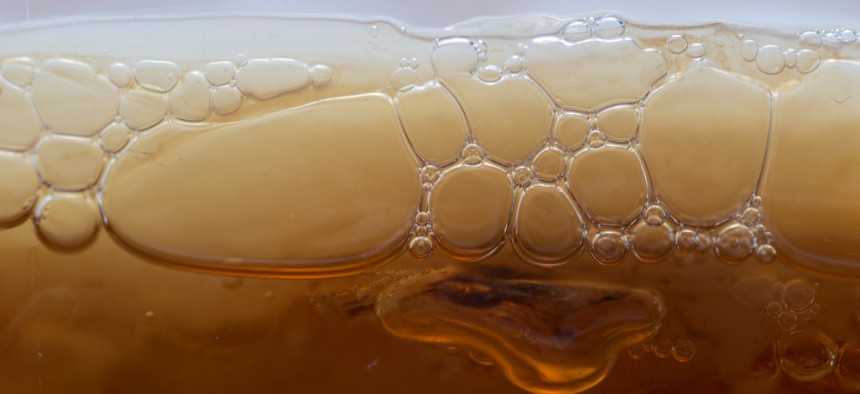Army-Funded Engineers Grow Kombucha-Inspired ‘Living Materials’ that Sense Threats

PopFoto/Shutterstock.com
The functional matter could support an array of military applications.
Army-backed researchers in the U.S. and U.K. recently puzzled out a way to produce “living materials” that seem straight out of science fiction—and their main source of inspiration was Kombucha, the hip and fizzy fermented drink often associated with health enthusiasts.
The fresh effort presents a promising means for generating innovative, tough and functional matter that can be used to detect pollutants, self-heal, purify water and more, according to a release published by the Army Research Laboratory this week.
“This is important to the Army as this can lead to new materials with potential applications in microbial fuel cells, sense and respond systems, and self-reporting and self-repairing materials,” Army Research Office Program Manager Dr. Dawanne Poree said in the statement.
Made up of tea, sugar, bacteria and yeast, Kombucha is a trendy beverage that some say offers meaningful health benefits—though those claims are not backed by science. For these effervescent drink-inspired experiments, engineers from the Massachusetts Institute of Technology and Imperial College London turned to a symbiotic culture of bacteria and yeast, or SCOBY, that the release said is “similar to the kombucha mother used to ferment tea.”
The scientists combined a bacteria called Komagataeibacter rhaeticus that was previously isolated from a SCOBY with a strain of laboratory-grown yeast called Saccharomyces cerevisiae—which subsequently resulted in the tough, living materials that can perform functions with useful applications for defense and beyond. Unlike most wild yeast strains often used in fermentation, the lab-grown option enabled researchers to “engineer the cells to do any of the things that lab yeast can do, such as producing enzymes that glow in the dark, or sensing pollutants or pathogens in the environment,” the release notes.
The bacteria species used spawned large quantities of cellulose, which provided a structural component or sort of scaffolding that could house yeast, or just enzymes, depending on what the scientists opt. The material takes just a few days to grow, the release said, adding that “if left long enough, it can thicken to occupy a space as large as a bathtub.”
Efforts to prove the potential of the resulting microbe—deemed Syn-SCOBY—involved making material with yeast that can sense a potential environmental pollutant and using a yeast strain that, when exposed to blue light, emits a glowing protein called luciferase. Additionally, the announcement said yeast can also be engineered to break down pollutants or pathogens sensed, which aligns with military needs in and out of warzones.
“Our community believes that living materials could provide the most effective sensing of chem/bio warfare agents, especially those of unknown genetics and chemistry,” Dr. Jim Burgess, program manager for the Army’s Institute for Soldier Nanotechnologies at MIT, Army Research Office, said.
Funding for the work flowed in from that institute and the ARO. The comprehensive research was also published in the Nature Materials journal earlier this month.
Going forward, the scientists are exploring how their nascent Syn-SCOBY system can be applied for biomedical- and food-centered purposes, like engineering yeast cells to generate health-improving proteins or antimicrobials that people could consume.
“We think this is a good system that is very cheap and very easy to make in very large quantities,” MIT graduate student and the paper’s lead author, Tzu-Chieh Tang, said.






